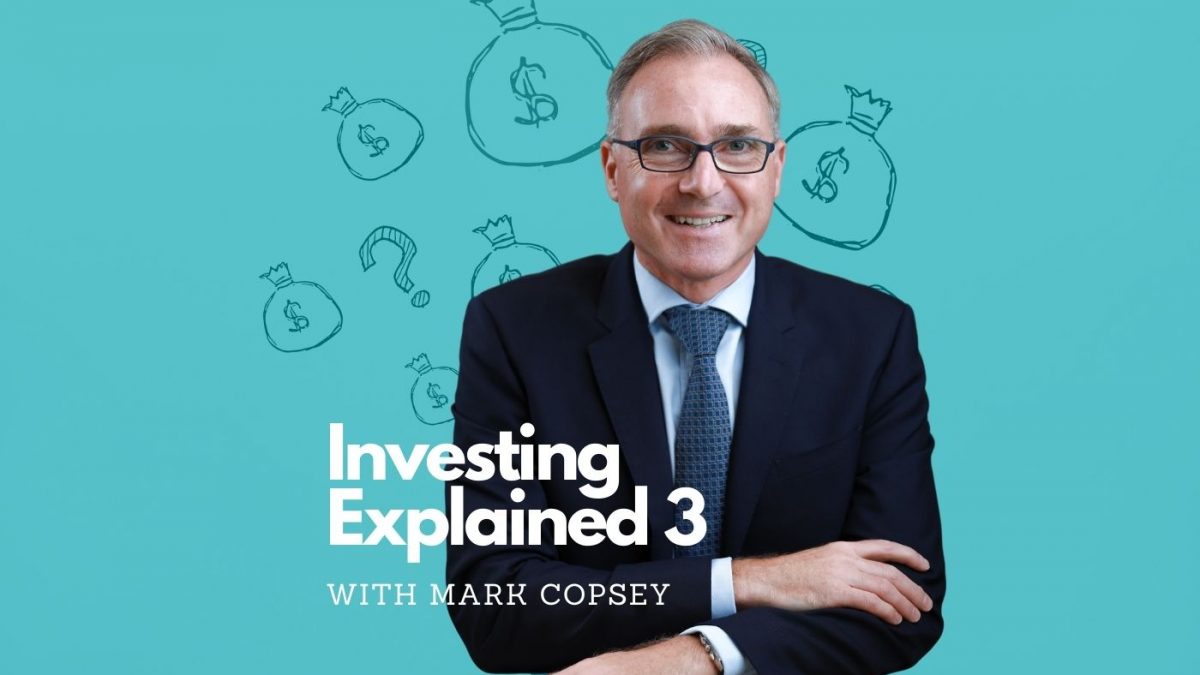A beginner’s guide to investing [Part 3]
The psychology of investing
By Mark Copsey, Partner
In this third installment of my ‘beginner’s guide to investing’ series, we explore the psychology of making investment decisions (also known as behavioural finance) and how many factors – including a range of ‘cognitive biases’ we all hold to some extent – can greatly influence your ability to build wealth through active investing in the sharemarket.
The simple fact is: humans are not a rational bunch. We can be tired, cranky, superstitious, optimistic, overconfident and so much more – sometimes all on the same day! So when it comes to choosing when to buy and sell individual stocks, we can be our own worst enemies. One thing this post will make clear is that becoming a better investor has little to do with being “smarter” or a “numbers person” (you’ll see how those things can in fact work against you in some cases). Investing can be accessible to everyone as long as you understand yourself and plan an approach that will work for you.
Let’s take a look at a few examples of cognitive biases. There are so many more; you can always Google this to find some great resources online. The more you understand what your mind is capable of, the better your investment strategy will be (even if that means engaging a professional to run your portfolio for you):
Confirmation bias
Sometimes we search for information that seems to prove an opinion or belief we already hold. Cherry-picking information that serves our agenda doesn’t make us right. In reality, there is far too much information for any human to process when it comes to any particular stock price and what it might do next. Of course, you should always consider as much information as you possibly can before making an investment decision, but try to look at information that both supports and challenges your preconceived ideas about a particular stock (especially in the case of a company you love). In this way, you can avoid the thought that your next move is a “sure thing” since all the evidence (you chose) seemed to support it.
Information bias
Sometimes we place too much importance on a particular metric, signal or piece of information (e.g. daily price movements) and fixate on it over others (e.g. changes to significant shareholdings, notable resignations/acquisitions, current liabilities, a regulatory determination that is just around the corner – and countless other data points that are available to you)! Beyond what’s going on in any individual company, there are also ‘signals’ in the market both domestically and internationally (e.g. price movements in commodities such as gold and copper). It’s very understandable how this particular bias comes about considering the sheer amount of ever-changing information out there!
Loss aversion
Your risk profile may determine how much risk you’re willing to take on when investing, but loss aversion can still affect us all. An example of this is when a share price in your portfolio has tanked but you would rather hold onto it (for no good reason other than to leave your loss unrealised). That money could instead be redeployed elsewhere, e.g. in another up-and-coming stock. Instead, your value continues to fall and the opportunity cost (the potential gains you’ve missed) continues to grow. Similar to this is the ‘endowment effect’, where we place more value on an asset we already own rather than another one we could just as easily own. Humans can be overly attached to losing stocks for these reasons too.
I have been guilty of this in the past. If you read part 2 of this series I shared some examples of stocks I held on to for too long.
Hot hand
Also known as the gambler’s fallacy, the ‘hot hand’ thinks they are on a winning streak because of a couple of early or consecutive wins and starts to believe they can do no wrong. They grow overconfident and sometimes increasingly reckless (e.g. buying/selling too frequently or failing to properly diversify their portfolio). Avoid this by considering each investment as a completely separate, independent event. Read commentary from a range of sources (not just other bullish pundits supporting your view) and consider as much information as you can before making a move. If you’re at risk of this behaviour, recite the standard financial disclaimer in the mirror each morning: past performance is not an indicator of future performance!
Anchoring bias
Anchoring is when we fixate on a particular piece of information at a point in time (e.g. where the share price was when you bought in, or perhaps its 52-week high). A share price at any point in the past is not an indicator of what it might do next. This bias, tied with loss aversion, might prevent you from selling until the price is “at least the same as when you bought in”. As you can see, this is an irrational thought more grounded in hope than logic. We’re talking about active investing here, so you can’t afford to sit on all your unrealised losses when you could be making more with those funds elsewhere. Running a diversified and efficient portfolio means sometimes taking a loss to make a gain elsewhere; and picking the best possible times to buy/sell under the circumstances.
Over the years I have seen this behaviour in clients’ portfolios and for whatever reason I’ve been unable to convince them otherwise.
Chasing losses
Like ‘hot hand’, this is another behaviour prevalent in gambling as well as stock picking. That should be enough of a signal to steer clear! Chasing losses can look like ‘averaging down’, when you keep buying more of the same share at lower and lower prices to bring your average purchase price down (meaning you might make a bigger, quicker profit when the price starts to rebound). This strategy is fraught with danger even for the most experienced investors and, like buying a boat, could quickly become a black hole from which your money does not return. This is not to be confused with ‘Dollar-Cost Averaging’ (when you buy a set amount of the same share at consistent intervals regardless of price), which can be a valid way to manage volatility in the market.
Many years ago I knew someone who kept buying One.Tel shares as the price kept falling thinking they were getting a bargain. Those who can remember One.Tel will know this strategy didn’t work out too well.
Other factors: emotion, overthinking and ‘picking winners’
Now that you have some examples of cognitive biases, let’s also consider the role played by emotion in all this.
Investing in shares can be an emotional affair. Maybe a late parent or grandparent gifted you a parcel of shares in an energy or resources company decades ago and you just can’t bring yourself to sell it; even though you think their share price peaked a while ago and you’re now ethically opposed to their business model.
And then there’s the news cycle, with all its terrifying downs and dizzying highs. When markets change and prices fall, many are quick to elicit an emotional response such as fear, panic or greed. This can happen to even the most sophisticated investors and fund managers. Sometimes we sell in a panic, which is often a poor decision as prices can rebound after an initial shock. Those who act on emotion can lose out in a flash. To stay on track with your long-term financial goals, managing your emotions is a wise strategy.
With the vast number of options available to investors, it’s easy to get caught up in overthinking every trade and what you should or could be doing better. This is often seen as ‘analysis paralysis’, where investors have an impossible task of choosing how to act, and end up missing out on chances to profit because of this. Earlier we looked at some factors that may be causing this behaviour, e.g. anchoring; don’t hold off on investing because you’re waiting for the 52-week low to come back around again. And don’t hold off from selling while waiting for the 52-week high. These are irrational thoughts.
Picking winners is something many people think they can do by analysing the intrinsic value of a stock. But many are proven wrong time and time again, including major fund managers. I wrote a blog post on this a while back: Is stock picking a mugs game? If you are going to pick individual stocks, be sure to diversify your portfolio (across stocks and other asset classes) and protect yourself from being too reliant on the fortunes of any individual pick. Look at rebalancing your portfolio every so often to further protect yourself from volatility. I recently shared a post about a hamster, Mr. Goxx, who has been picking crypto investments using a hamster wheel to land on one and then two tunnels representing either ‘buy’ or ‘sell’. He’s up 20% since he started in June.
Conclusion
You might think to yourself: “sure, I face these disadvantages being human, but so does everybody else, so we can all win from time to time!” The reality is a huge percentage of daily trades on the ASX are actually made by machines (think algorithmic and high-frequency trading), and these highly rational investing bots can process far more information than you can across all international markets without ever sleeping or changing their mood. So no, it’s not a level playing field at all. I don’t say this to scare anyone off investing, only to emphasise the importance of doing it wisely.
Revisiting the first article in this series: you have to understand your investor profile including why you’re investing and how much risk you’re willing to take on. Understand the different asset classes and which ones might serve your agenda best. Find a cheap broker and make consistent investments (and savings) while you learn the ropes and build a diversified portfolio.
Revisiting the second article in this series: at any level of risk tolerance, Exchange Traded Funds are an excellent way to achieve a diversified exposure to a whole range of publicly listed companies (sometimes organised under a theme you might like such as high technology or sustainability; or according to risk profile such as ‘conservative’ or ‘balanced’). This strategy can help you automatically subvert a whole bunch of the natural thinking traps or cognitive biases we can all fall into.
Finally, take time to understand your own investing behaviour and which cognitive biases (of which we’ve only scratched the surface here) you might be guilty, or capable, of in your own investing. Avoid them by working with professionals, considering a wide range of conflicting information, diversifying your portfolio and being consistent in your approach to investing (e.g. to integrate practices such as dollar-cost averaging). Try to identify when you might be acting on emotion instead of anything else and interrupt that thought process right there.
It can take years and decades to become an effective investor in your own way, but since we’re talking about growing your family’s wealth, that is a noble cause. If we can at least prevent you from making some avoidable mistakes in the beginning while you’re finding your feet, we can ensure your confidence is built over time rather than shaken and eroded. In that way, you can keep going and eventually find an approach that works for you without missing out on the opportunities of a lifetime due to a few bad experiences and fear.
In the next and final part of this series, I’ll do a “if I’d known at 25 what I know now” post to offer some practical guidance.
And remember, my door is always open (not that our office has any): mtcopsey@allworths.com.au
IMPORTANT NOTICE
This blog post contains general information only and has been prepared by Allworths without reference to your objectives, financial situation or needs. Allworths cannot guarantee the accuracy, completeness or timeliness of the information contained here. By making this information available to you, we are not providing professional advice or recommendations. Before acting on any of the information contained here, you should seek professional advice. Allworths Wealth Management Pty Limited (AFSL 457 155) is the Wealth Management arm of Allworths Chartered Accountants. For further information, please contact us on (02) 9264 6733 or email growth@allworths.com.au.




